Which two statements about the Security Fabric are true? (Choose two.)
Refer to the exhibit, which contains the output of diagnose sys session list.

If the HA ID for the primary unit is zero (0), which statement about the output is true?
Refer to the exhibit, which shows a partial web filter profile configuration.
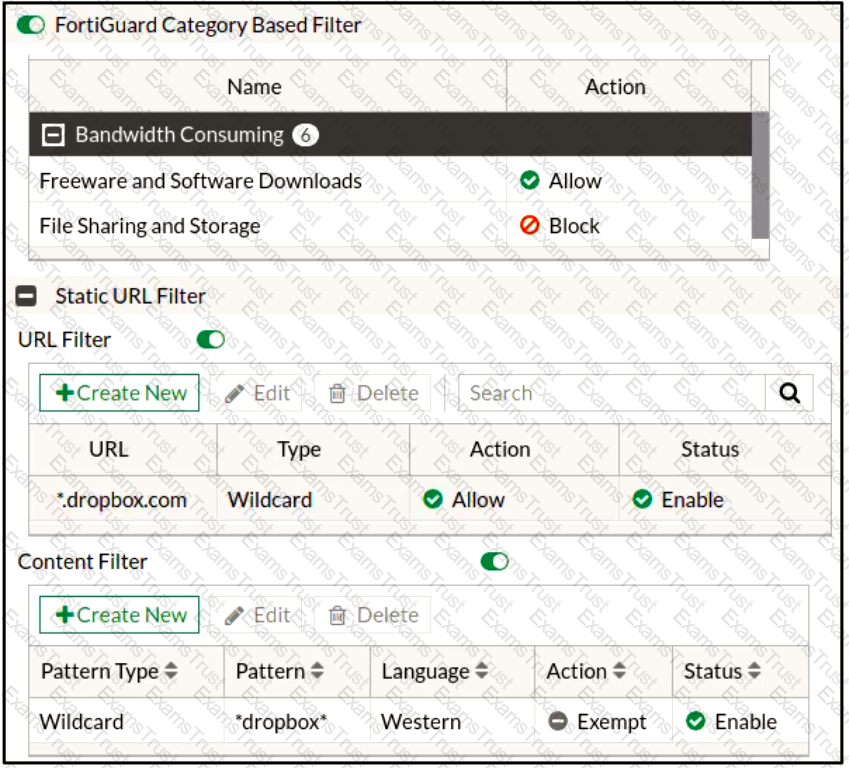
Which action will FortiGate take if a user attempts to access which is categorized as File Sharing and Storage?
Which two configuration settings change the behavior for content-inspected traffic while FortiGate is in conserve mode? (Choose two.)
Refer to the exhibit, which shows the output of a debug command.
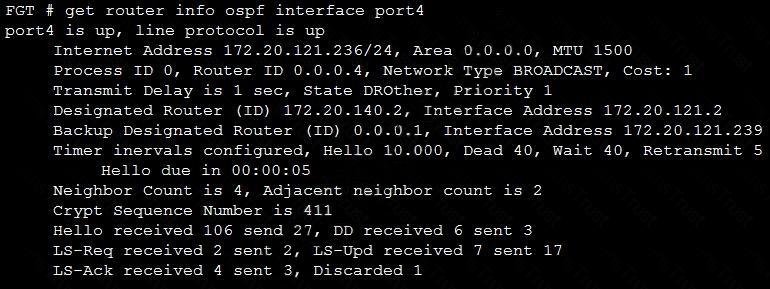
Which two statements about the output are true? (Choose two.)
View the exhibit, which contains the output of a debug command, and then answer the question below.
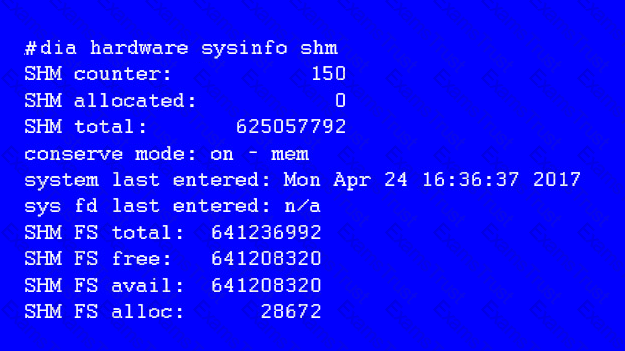
What statement is correct about this FortiGate?
Refer to the exhibit, which contains the output of a debug command.

If the default settings are in place, what can be concluded about the conserve mode shown in the exhibit?
What configuration changes can reduce the memory utilization in a FortiGate? (Choose two.)
View the central management configuration shown in the exhibit, and then answer the question below.
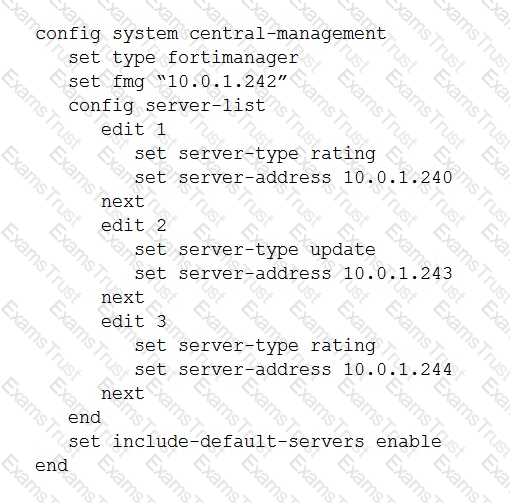
Which server will FortiGate choose for antivirus and IPS updates if 10.0.1.243 is experiencing an outage?
Examine the output of the ‘diagnose sys session list expectation’ command shown in the exhibit; than answer the question below.
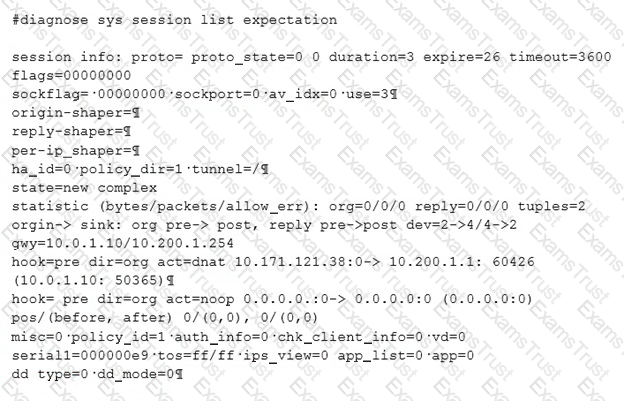
Which statement is true regarding the session in the exhibit?
View the exhibit, which contains an entry in the session table, and then answer the question below.
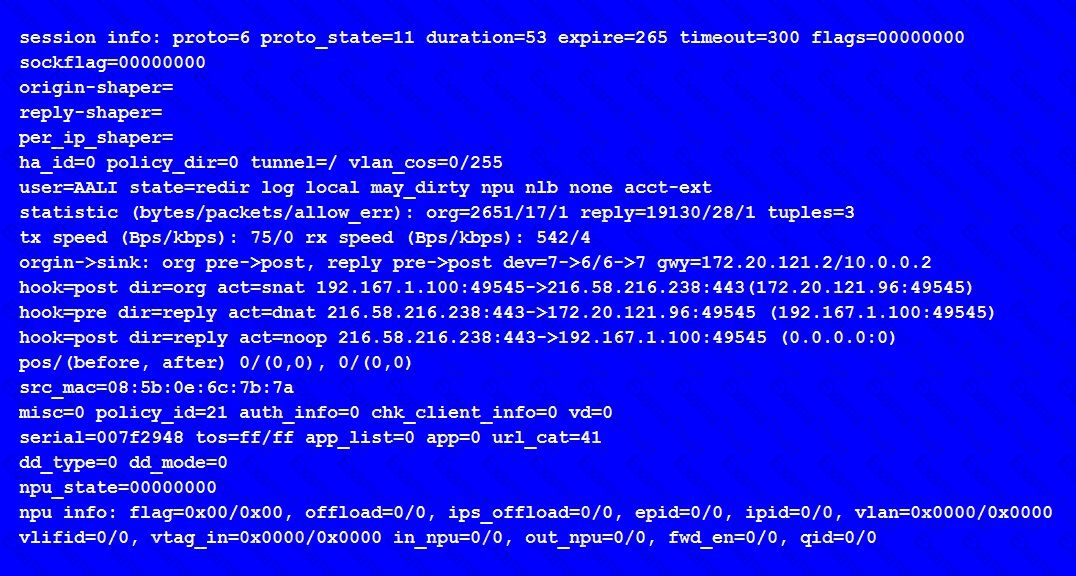
Which one of the following statements is true regarding FortiGate’s inspection of this session?
An administrator cannot connect to the GIU of a FortiGate unit with the IP address 10.0.1.254. The administrator runs the debug flow while attempting the connection using HTTP. The output of the debug flow is shown in the exhibit:

Based on the error displayed by the debug flow, which are valid reasons for this problem? (Choose two.)
Examine the following partial output from a sniffer command; then answer the question below.
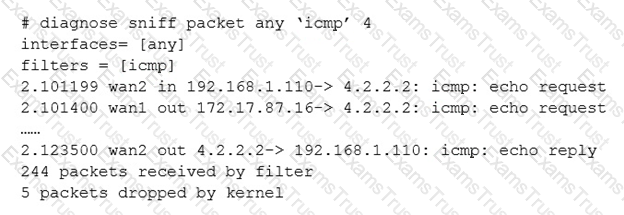
What is the meaning of the packets dropped counter at the end of the sniffer?
An administrator has configured a dial-up IPsec VPN with one phase 2, extended authentication (XAuth) and IKE mode configuration. The administrator has also enabled the IKE real time debug:
diagnose debug application ike-1
diagnose debug enable
In which order is each step and phase displayed in the debug output each time a new dial-up user is connecting to the VPN?
An administrator wants to capture encrypted phase 2 traffic between two FortiGate devices using the built-in sniffer.
If the administrator knows that there is no NAT device located between both FortiGate devices, which command should the administrator run?
Which statement about NGFW policy-based application filtering is true?
View the exhibit, which contains the output of a BGP debug command, and then answer the question below.

Which of the following statements about the exhibit are true? (Choose two.)
Refer to the exhibit, which contains partial output from an IKE real-time debug.

Based on the debug output, which phase 1 setting is enabled in the configuration of this VPN?
An administrator has configured two FortiGate devices for an HA cluster. While testing HA failover, the administrator notices that some of the switches in the network continue to send traffic to the former primary device. The administrator decides to enable the setting link-failed-signal to fix the problem.
Which statement about this setting is true?
Which configuration can be used to reduce the number of BGP sessions in an IBGP network?
Refer to the exhibit, which contains a CLI script configuration on FortiManager.
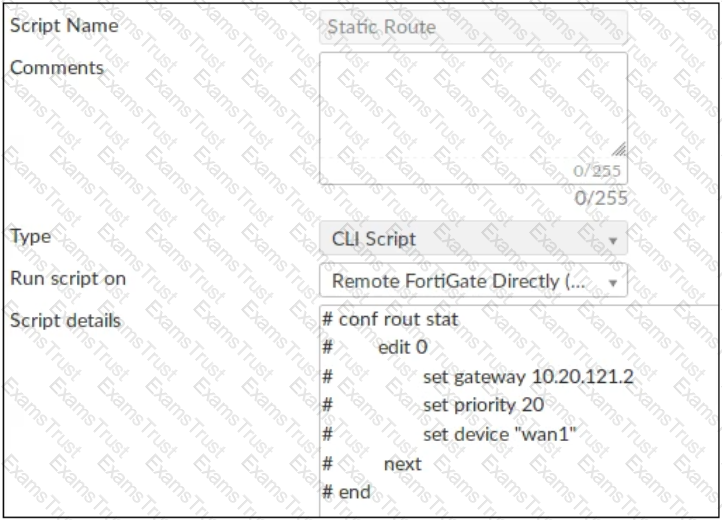
An administrator configured the CLI script on FortiManager, but the script failed to apply any changes to the managed device after being executed.
What are two reasons why the script did not make any changes to the managed device? (Choose two.)
Refer to the exhibit, which shows the output of a BGP debug command.

What can be concluded about the router in this scenario?
View the exhibit, which contains the output of diagnose sys session list, and then answer the question below.
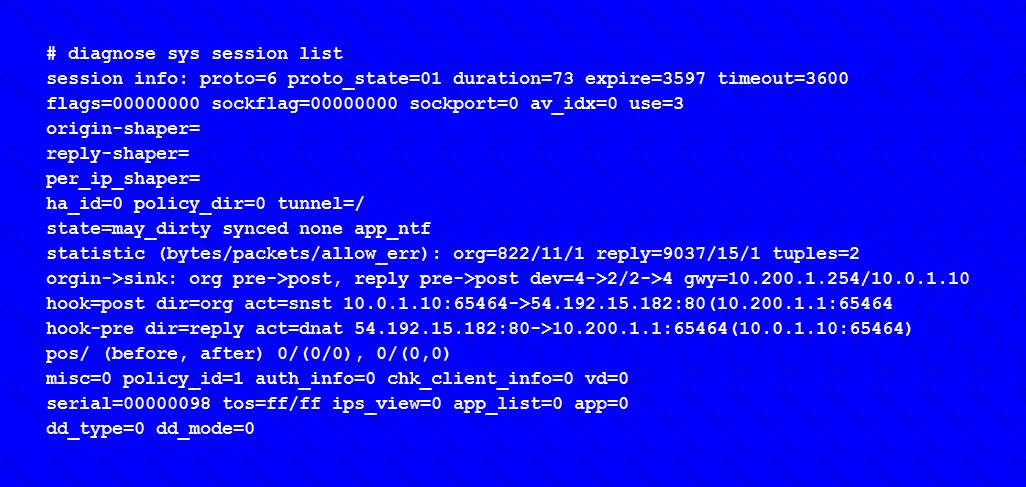
If the HA ID for the primary unit is zero (0), which statement is correct regarding the output?
Refer to the exhibit, which shows partial outputs from two routing debug commands.

Which change must an administrator make on FortiGate to route web traffic from internal users to the internet, using ECMP?